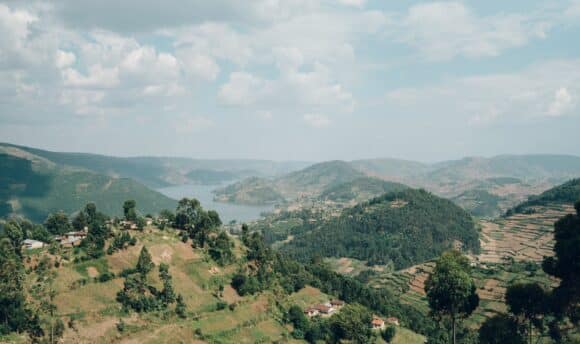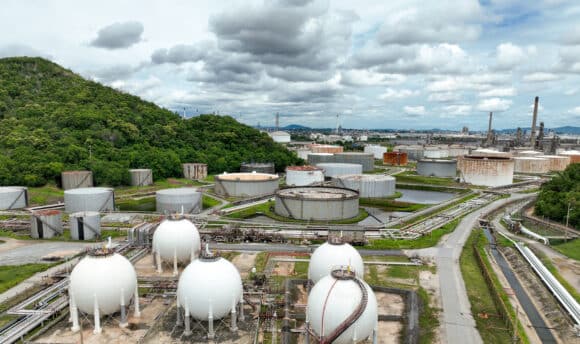But MetLife’s policy does not yet match best practices from US and global peers
KEY FACTS
- In June 2020, MetLife quietly adopted an investment policy that restricts new investments in some coal companies, according to its most recent Sustainability Report (page 43). The policy states that MetLife’s general account will make “no new investments in miners or utilities deriving 25% or more of their revenue from thermal coal.” This screen will be “implemented prior to year-end 2020.”
- Additionally, a Sustainability FAQ on MetLife’s website indicates that MetLife will not make new investments in companies that hold at least 20% of their oil reserves in oil sands.
- This new policy makes MetLife the first major U.S. life insurer to adopt a policy on coal and/or tar sands investing. The NYC-based life insurance giant is joining a global movement of insurers shifting capital out of coal and tar sands. To date, nearly thirty major insurers have adopted policies on coal investments, and more than a dozen limit tar sands investing.
- However, MetLife’s policy falls short with loopholes for existing coal holdings and third-party assets, as well as incomplete definitions of coal and tar sands companies. The 25% revenue threshold excludes many diversified coal power and mining companies, and the 20% reserves criteria does not account for tar sands transportation companies.
- The policy also does not address companies’ policies on human and Indigenous rights, particularly Free, Prior, and Informed Consent (FPIC). MetLife remains a top bondholder in the Dakota Access Pipeline, which has faced years of Indigenous-led resistance. Last week, the pipeline was in the news for refusing to shut down, despite a district court ruling that it must be emptied pending a federal environmental permit.
- MetLife’s policy follows sustained pressure from activists and shareholders. In June 2019, UK-based life insurance giant Legal & General divested from MetLife, citing concerns around the company’s “lack of robust climate governance, poor risk disclosure and limited visibility over climate related opportunities.”
HOW DOES THE POLICY MEASURE UP?
- European peers are taking much more ambitious steps to phase out coal from investment portfolios in line with a safe climate future. For example, French insurer AXA has committed to get out of coal entirely in line with a 1.5ºC pathway. This means that AXA will not invest in companies that are expanding coal and is pushing portfolio companies to adopt a closure plan for their coal assets.
- MetLife’s policy also falls short of the ambition of some US peers by not divesting its assets and defining coal and tar sands companies more narrowly, as detailed below.
POLICY LOOPHOLES
- Divestment: MetLife must strengthen the policy to divest its existing assets, rather than just set up a screen on future investments. According to the most recent numbers from the California Department of Insurance, MetLife and its subsidiaries have $4.1 billion invested in coal companies.
- Coal Company Definition: MetLife’s definition of a coal company has three fundamental problems.
- Electricity generation: MetLife does not employ criteria to evaluate electricity producers based on coal as a share of power generation. The best metric to reflect the climate impact of coal power companies is to measure the share of coal in their power generation as opposed to their coal-related revenue, particularly given how unprofitable coal is.
- Absolute threshold: The policy does not include coal companies as defined by absolute thresholds – which account for large, diversified companies that are mining or combusting large quantities of coal – or expansion criteria, to identify if a company is building out new coal. Many diversified companies fall under the 25% threshold but continue to actively facilitate new coal projects across the globe, as the Global Coal Exit List data reveals. For example, 101 companies under a 25% revenue threshold are planning new coal mines.
- Coal phaseout: MetLife must commit to revisiting the policy and lowering its coal company thresholds to zero to support a full exit from coal by 2030 in OECD/European countries and by 2040 at the latest elsewhere, in line with a 1.5ºC pathway.
- Tar Sands Company Definition: The restrictions on investing in tar sands extraction companies is a good first step, but the policy does not address tar sands transport companies. Given this loophole, MetLife continues to be at risk of supporting Indigenous rights abuses. Pipelines, in particular, are enabling the increased extraction of tar sands in Alberta, Canada and posing grave risks to Indigenous rights, local waterways and environments, and the climate.
- Oil and Gas: MetLife’s investment screen does not address oil and gas companies beyond tar sands. This means that it can continue to invest freely in companies expanding oil and gas infrastructure, including fracking, Arctic oil and gas, and deep-sea exploration. MetLife and its subsidiaries have $14.4 billion invested in oil, gas, and utilities, according to the California Department of Insurance.
- Third-party assets: This policy only applies to MetLife’s general account, which has $467 billion under management. The portfolios that MetLife manages for institutional clients – totaling $134.4 billion – can continue to invest in coal companies with no restrictions.
METLIFE REMAINS A TOP BONDHOLDER IN DAPL
- MetLife is a top bondholder in the Dakota Access Pipeline (DAPL). Last year, the pipeline raised $2.5 billion in net proceeds from a bond offering purchased by U.S. insurance companies and mutual funds.
- According to data from Rainforest Action Network, MetLife owns the largest share in two of the three tranches of the bond (12.91 and 11.07%) and second largest share in the third (6.33%). Source: Bloomberg Terminal.
- In July 2020, a district court ruled that DAPL must shut down operations and be emptied of oil pending an environmental review. Though days after the court ruling, DAPL’s operator Energy Transfer Partners said that it would not take the pipeline offline. Following years of Indigenous-led resistance to the project, the pipeline’s future is now highly uncertain.
BACKGROUND ON METLIFEMetLife Inc. (NYSE: MET) is the largest life insurer in terms of life insurance “in-force” in North America and second largest by assets. MetLife also operates in annuities, employee benefits, and asset management businesses worldwide. In Unfriend Coal’s “Insurance, Coal, and Climate Change” scorecards from 2018 and 2019, MetLife ranked at the bottom with scores of 0 out of 10 for policies on fossil fuel investment policies.
OUR TAKE
Elana Sulakshana, Energy Finance Campaigner at Rainforest Action Network, said:
“As one of the biggest life insurers in the U.S., MetLife has a unique responsibility to address its historic complicity in fueling the climate crisis. The new coal and tar sands policy is a first step, but it remains far from meeting that responsibility.”
“MetLife’s policy includes major loopholes for existing coal holdings and third-party assets, as well as incomplete company definitions that exclude diversified coal power and mining companies and tar sands pipeline operators.”
“We are urging MetLife to join the growing movement and divest from all coal, oil, and gas companies that are not aligned with a 1.5ºC scenario. By decarbonizing its portfolio, MetLife can spur the energy transition we need, rather than be stuck holding the bag on stranded assets like the Dakota Access Pipeline.”
“Insure Our Future campaign will continue to push MetLife and fellow U.S. life insurance giants Prudential, TIAA, NY Life, and the rest of the insurance industry to adopt policies that are commensurate with the urgency and scale of the climate crisis.”



